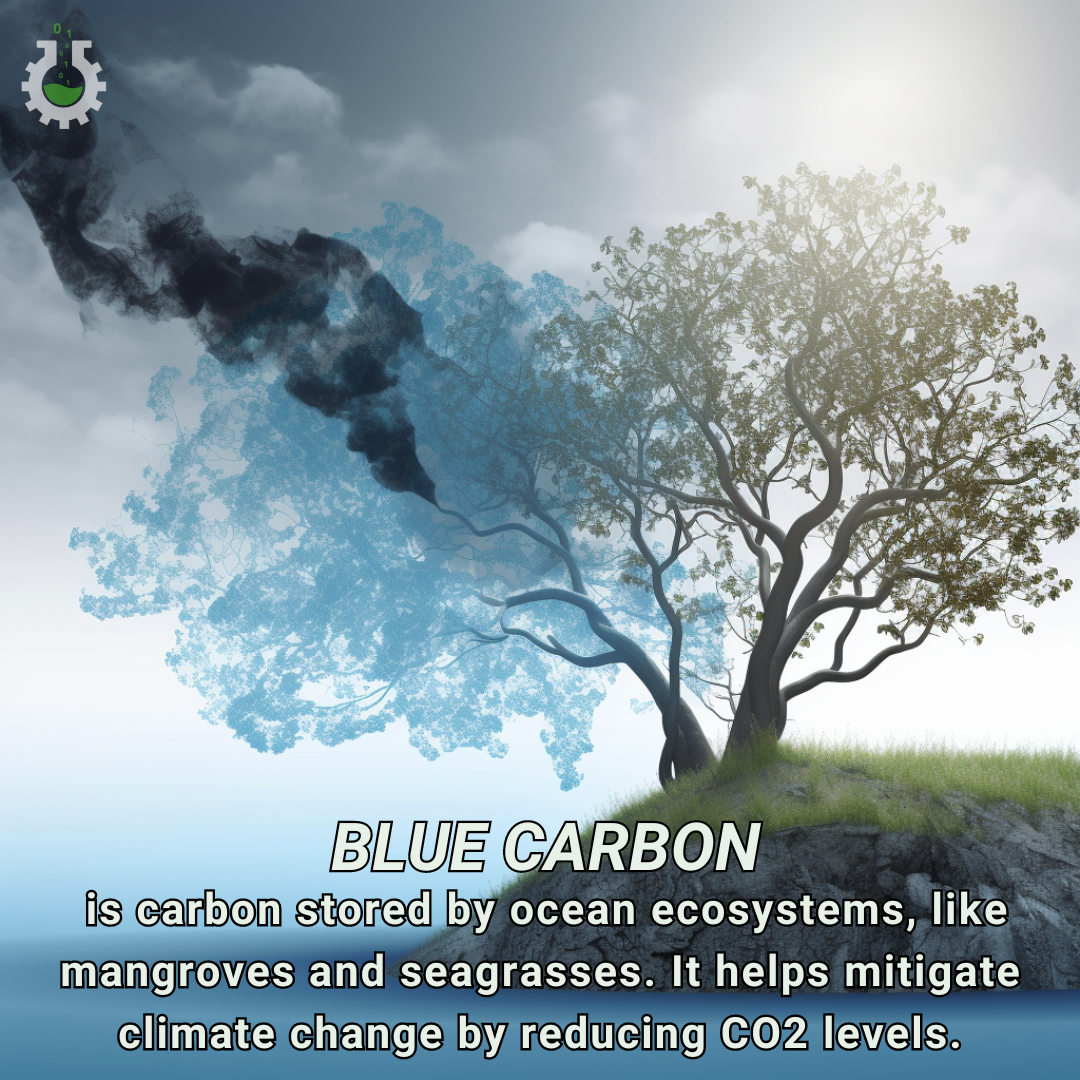July 17, 2024
Climate Change Poster Collection of the Day – Blue Carbon
Book a Demo
Today’s Climate Change Poster Collection highlights Blue Carbon, refers to the carbon captured and stored by the world’s oceanic and coastal ecosystems, including mangroves, salt marshes, and seagrasses. These ecosystems play a crucial role in mitigating climate change by acting as significant carbon sinks. Unlike terrestrial forests, which store carbon in biomass and soil, blue carbon ecosystems sequester carbon in their plant tissues and sediments, which can remain trapped for centuries. Mangroves, for example, are incredibly efficient at capturing atmospheric carbon dioxide and storing it in their roots and surrounding soil. This ability to sequester carbon is vital in the fight against climate change, as it helps to reduce the overall concentration of greenhouse gases in the atmosphere.
Mangroves, seagrasses, and salt marshes are often referred to as the “blue forests” of our planet. These ecosystems are particularly effective at capturing carbon due to their unique adaptations to saline environments. Mangroves, with their intricate root systems, not only stabilize coastlines but also trap sediments rich in organic carbon. Seagrasses, found in shallow marine environments, form dense underwater meadows that capture carbon in their leaves and roots. Salt marshes, located in the intertidal zones, are characterized by their dense vegetation that traps sediments and organic matter, creating thick layers of carbon-rich soil. These ecosystems are estimated to sequester carbon at rates up to ten times higher than terrestrial forests, making them indispensable in the global carbon cycle.
However, these ecosystems are under threat from human activities such as coastal development, pollution, and deforestation. When these areas are degraded or destroyed, the stored carbon is released back into the atmosphere, exacerbating climate change. Coastal development often leads to the destruction of mangroves and salt marshes, while pollution from agricultural runoff and industrial activities can degrade seagrass beds. Additionally, climate change itself poses a threat to these ecosystems through rising sea levels, increased water temperatures, and ocean acidification. The loss of these ecosystems diminishes their capacity to act as natural buffers against extreme weather events, such as hurricanes and storm surges, which are becoming more frequent and severe due to climate change.
Protecting and restoring blue carbon ecosystems is therefore essential not only for carbon sequestration but also for maintaining biodiversity, supporting fisheries, and enhancing coastal resilience. These ecosystems provide habitat for a wide range of marine and terrestrial species, many of which are commercially important or endangered. They also support local communities by providing resources such as fish, timber, and tourism opportunities. Restoring degraded blue carbon ecosystems can enhance their ability to capture carbon, improve water quality, and increase their resilience to climate impacts. Restoration efforts often involve replanting mangroves, restoring tidal flow to salt marshes, and reducing nutrient pollution to support seagrass recovery.
International efforts are increasingly recognizing the importance of blue carbon, with initiatives aimed at conserving these vital areas and incorporating them into climate policy frameworks. Countries are beginning to include blue carbon in their Nationally Determined Contributions (NDCs) under the Paris Agreement, recognizing the potential of these ecosystems to contribute to their climate targets. Organizations such as the Blue Carbon Initiative are working to advance scientific understanding, policy development, and on-the-ground conservation efforts. By investing in the protection and restoration of coastal and marine ecosystems, we can harness their natural ability to capture and store carbon, thereby contributing to global climate mitigation efforts and fostering a more sustainable and resilient future.
Blue carbon ecosystems are a critical component of our planet’s natural defenses against climate change. Their ability to sequester carbon, support biodiversity, and protect coastlines makes them invaluable assets in the fight against global warming. However, their continued degradation poses a significant threat to their carbon storage capacity and the myriad benefits they provide. It is imperative that we prioritize the conservation and restoration of these ecosystems through coordinated international efforts, robust policy frameworks, and community engagement. By doing so, we can ensure that blue carbon ecosystems continue to play their vital role in maintaining the health of our planet and securing a sustainable future for generations to come.
Discover an inspiring collection of climate change poster.



